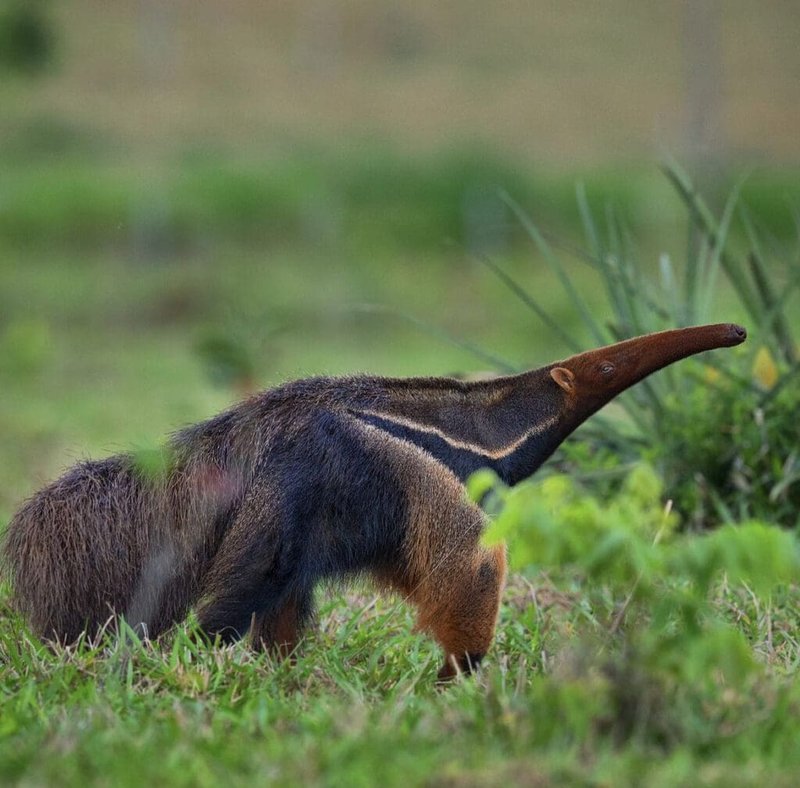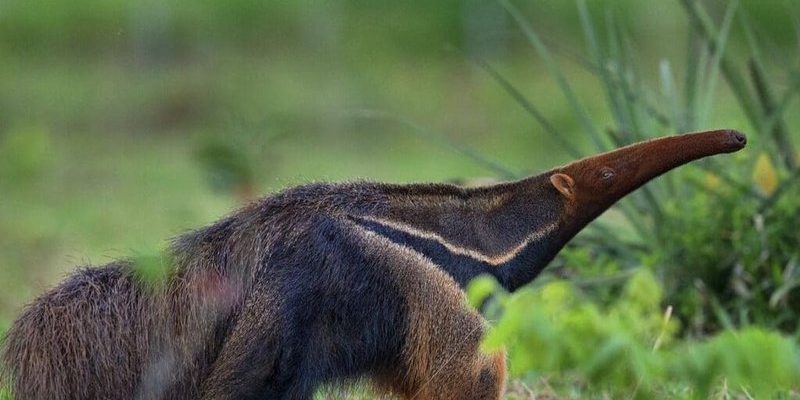
Giant anteaters, known scientifically as *Myrmecophaga tridactyla*, are fascinating animals. They can grow up to 7 feet long, including their tails, and they primarily feed on ants and termites. If you ever find yourself face-to-face with one, you might be wondering what to do next. Here’s the scoop on how to handle such an encounter responsibly while still enjoying the beauty of nature.
Understanding the Giant Anteater
Giant anteaters are not your everyday wildlife. These creatures have powerful claws, designed for tearing open ant mounds, and strong limbs that allow them to move gracefully despite their size. They mostly inhabit grasslands and forests, and their long, sticky tongues can measure up to 16 inches! It’s almost like they have their own specialized fishing gear for catching ants and termites.
You might be curious about their behavior. Anteaters are generally solitary and have a calm demeanor. They prefer to avoid confrontation, but they can be defensive if threatened. So, understanding their nature is important. Imagine it like encountering a shy person at a party—they may not want to engage, but they’ll definitely stand their ground if pushed.
Stay Calm and Assess the Situation
If you find yourself in the presence of a giant anteater, the first thing to do is to stay calm. I know, it’s easier said than done! Take a deep breath and assess the situation. Is the anteater aware of you? Is it focused on foraging? These factors can influence how you should react.
You might feel a surge of excitement, but resist the urge to rush in for a closer look. Instead, gently back away a few feet where you can still observe it. This distance shows respect for the animal’s space while keeping you safe. Honestly, the best moments are often from a distance—you get to see its natural behavior without causing stress.
Observe from a Safe Distance
Continuing from that last thought, let’s explore why observing giant anteaters from a distance is essential. They rely heavily on their acute sense of smell, so if you approach too closely or make sudden movements, you risk startling them. This can lead to defensive behavior, which you certainly want to avoid.
For instance, a giant anteater might rear up on its hind legs and display those massive claws if it feels threatened. It’s a reminder that while they are fascinating to watch, they are still wild animals equipped with survival instincts. So, enjoy the moment but do so respectfully.
What Not to Do When Encountering a Giant Anteater
Avoid certain actions that could escalate the situation. Here’s a straightforward list of what NOT to do if you come across a giant anteater:
- Don’t approach: Getting too close can make the animal feel cornered.
- Don’t feed: This can disrupt their natural behaviors and lead to health issues.
- Don’t make loud noises: Sudden sounds can startle them and provoke a defensive reaction.
- Don’t chase: This could lead to a dangerous situation for both you and the anteater.
Think of it as if you were a guest in someone’s home—respecting boundaries is key to a pleasant experience for everyone involved.
How to Document Your Encounter
If you’re lucky enough to see a giant anteater, chances are you’ll want to capture the moment. But while you might be eager to snap a picture, remember to do so in a way that doesn’t disrupt their behavior. Here’s how:
– Use a Zoom Lens: Bringing a camera with a zoom lens allows you to capture the anteater’s beauty from a distance, helping to keep both you and the animal safe.
– Be Patient: Wait for the right moment. Often, you’ll see more interesting behavior if you’re patient and allow the anteater to act naturally around you.
– Limit Flash Photography: Flash can be startling for wildlife. Natural light is best, both for the animal and the quality of your photos.
Documenting wildlife is like collecting memories—without the chaos of interference.
Educational Value of Your Encounter
Encounters with giant anteaters can be educational, providing a glimpse into their life and habitat. Observing these creatures helps us appreciate biodiversity and the ecosystems they inhabit. It can also spark conversations about conservation efforts.
Take a moment to reflect on what you’ve seen. You might think about how important it is to protect their habitats and the challenges they face due to deforestation and habitat loss. Sharing your experience with friends can help raise awareness about these remarkable creatures and the ecosystems they are part of.
Leaving No Trace Behind
Always remember to leave nature as you found it. Following the principle of “leave no trace” is crucial when encountering wildlife. This includes:
- Taking nothing but pictures: Ensure you don’t disturb the environment or take anything away.
- Cleaning up after yourself: Always pack out what you pack in, whether it’s food wrappers or other items.
- Respecting wildlife: Keep your distance to allow animals to continue with their natural behaviors.
In a way, it’s like being a good guest in someone else’s home—your actions can contribute to the well-being of the creatures that reside there.
Encountering a giant anteater in the wild is truly a special experience. By knowing what to do and how to behave, you can ensure a safe and memorable moment for yourself and the animal. Always approach these encounters with respect and curiosity, allowing nature to unfold its wonders before your eyes.
You might find that each time you connect with a wild creature, it deepens your appreciation for the natural world. So next time you’re out exploring, keep an eye out—adventure could be just a walk away!

